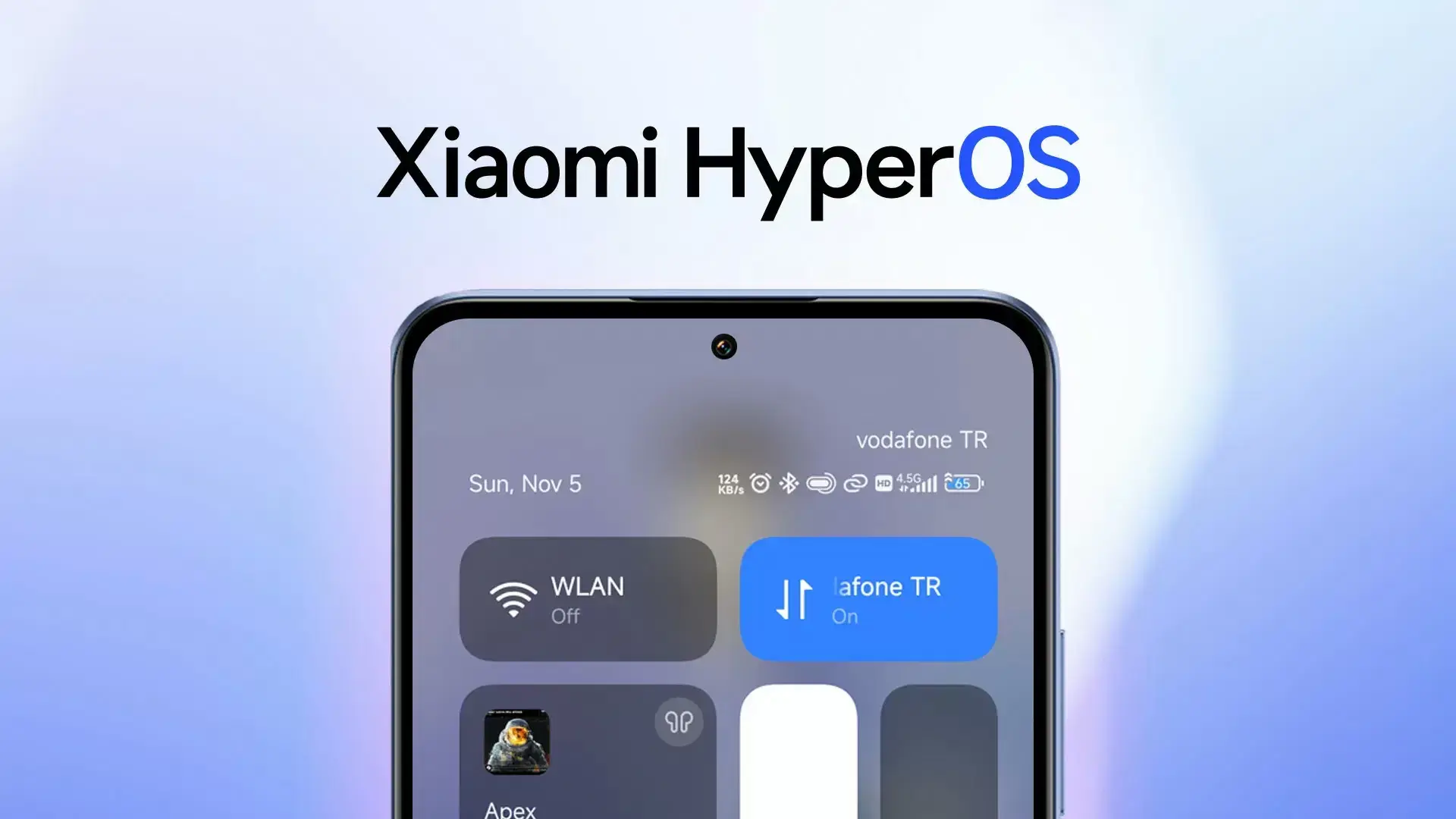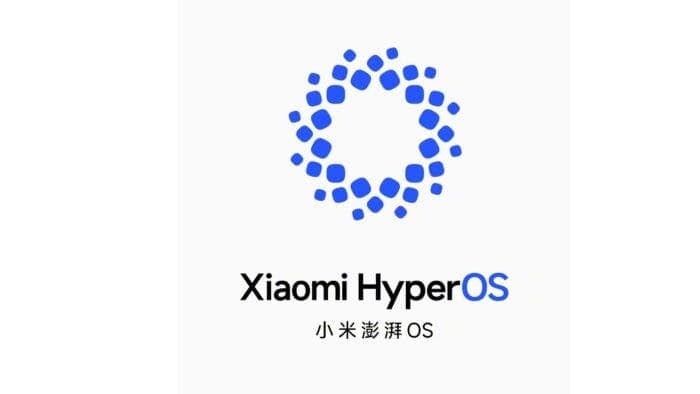In a significant leap forward, Xiaomi bid farewell to MIUI, its longstanding operating system, officially introducing the eagerly awaited HyperOS in October. The global rollout of this new system has recently commenced, with the POCO F5 being among the first devices to embrace the transition. Additionally, other models within the Mi Pilot program, serving as a testing ground, are gradually adopting HyperOS before its public release.
Unveiling Xiaomi’s HyperOS: A Leap into a Seamless Ecosystem
Despite the anticipation surrounding HyperOS, an intriguing element was notably absent until now – an official logo. Xiaomi enthusiasts had only encountered a makeshift representation featuring stylized letters with the company’s new font. However, the wait is now over, as Lei Jun, the CEO of Xiaomi, recently unveiled the official logo for HyperOS, providing the platform with a distinct identity.
Unveiling the HyperOS Identity

The global expansion of HyperOS commenced with devices like the POCO F5, Xiaomi 13T, Xiaomi 13 Ultra, and Redmi Note 12S. Lei Jun took to Twitter to reveal the official logo, describing it as a “galaxy of dots swirling like ideas and connections in our digital universe.” He elaborated that the dot matrix represents people and devices flowing freely, seamlessly connecting within the world of HyperOS, resembling stars in the real universe.
This unveiling marks a pivotal moment for HyperOS, as it establishes a visual identity to accompany its technological prowess. Lei Jun’s poetic description hints at the intricate connectivity that HyperOS envisions, portraying it as a dynamic and expansive digital universe.
HyperOS: More than Just an Operating System
Xiaomi’s CEO went beyond the logo reveal, sharing insightful details about HyperOS and its role in shaping the future of Xiaomi’s ecosystem. The slogan “Human x Car x Home” was emphasized as the guiding principle, signifying HyperOS’s commitment to forming a robust ecosystem with interoperable devices.
Lei Jun elaborated, stating, “We’ve been building a seamless and connected experience for our users.” He further hinted at the imminent launch of Xiaomi’s electric car, the Xiaomi SU7, equipped with infotainment screens featuring HyperOS. This integration positions HyperOS as a powerhouse, vital for the company’s future endeavors.
A User-Centric Ecosystem
Lei Jun expressed a commitment to creating a human-centered ecosystem, emphasizing that technology should serve people rather than dictate their experiences. Introducing Xiaomi HyperMind, an AI-based intelligence center, he described it as “our AI-based intelligence center designed to understand and learn from your daily habits.” This underlines Xiaomi’s dedication to leveraging artificial intelligence to enhance user experiences.
HyperOS’s commitment extends to inclusion and transparency, positioning itself as an open ecosystem. Xiaomi achieved this after 13 years of exploration, covering “12 sectors and 99 subsectors.” Collaborations with industry stakeholders, including developers, supply chains, and smart manufacturing experts, highlight Xiaomi’s comprehensive approach to ecosystem development.
The Dawn of a New Era for Xiaomi?
As HyperOS takes center stage, questions arise about its potential to usher in a new era for Xiaomi. Will users embrace this evolution, and what does the future hold for Xiaomi’s ecosystem? The recent unveiling of Xiaomi’s electric car, integrated with HyperOS, signals a strategic move toward seamless connectivity across devices.
Lei Jun’s visionary outlook and Xiaomi’s extensive groundwork suggest a promising trajectory. HyperOS not only represents a sophisticated operating system but also a cornerstone for a holistic and interconnected digital experience. While the future unfolds, patience is key. But there is undeniably a wealth of potential and ambition within Xiaomi’s foray into the realm of HyperOS. As technology enthusiasts await further developments, Xiaomi stands poised to redefine the user experience and shape the digital landscape in the years to come.
The future of Xiaomi’s HyperOS

A user-centric, connected ecosystem: Xiaomi’s emphasis on a “Human x Car x Home” experience suggests a future where HyperOS seamlessly connects all aspects of our lives. Imagine controlling your smart home devices, car infotainment system, and mobile phone from a single platform, with AI-powered assistants anticipating your needs and personalizing your experience. This level of integration could revolutionize the way we interact with technology, making it more intuitive and effortless.
Openness and collaboration: Xiaomi’s commitment to an open ecosystem could be a major advantage. By welcoming developers and stakeholders from various industries, HyperOS can attract a wider range of apps and services, fostering innovation and catering to diverse user needs. This collaborative approach could help HyperOS evolve into a truly global platform, overcoming traditional boundaries between operating systems and devices.
AI as the driving force: Artificial intelligence will likely play a central role in the future of HyperOS. Xiaomi’s HyperMind AI is already learning from user habits to personalize the experience, but imagine even more advanced capabilities. AI could power context-aware features, predictive maintenance for devices, and even personalized health and fitness coaching. The possibilities are endless, and HyperOS could become a leader in AI-driven user experiences.
Challenges and uncertainties: Of course, the road ahead for HyperOS isn’t without its challenges. Convincing users to switch from established operating systems like Android and iOS won’t be easy. Privacy concerns surrounding data collection and usage within the Xiaomi ecosystem need to be addressed transparently. And ensuring seamless integration across a diverse range of devices and platforms will require significant technical expertise and resources.
Overall, I believe Xiaomi’s HyperOS has the potential to be a game-changer in the tech industry. Its focus on user experience, open ecosystem, and AI-powered features could create a truly connected and personalized digital world. However, overcoming the challenges of user adoption, privacy concerns, and technical hurdles will be crucial for its success. I’m excited to see how HyperOS evolves in the coming years. And whether it can live up to its ambitious vision.





